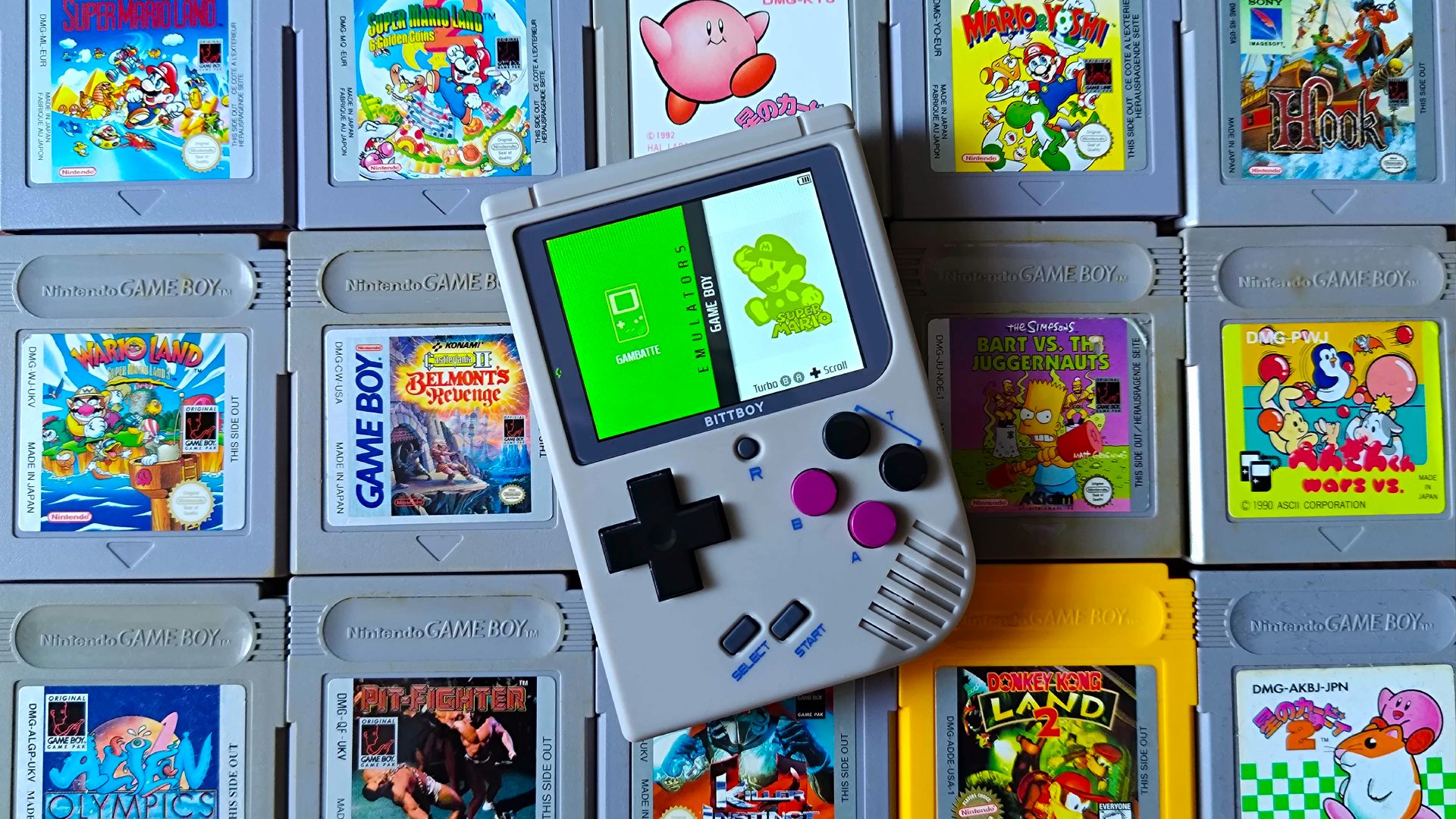
As a handheld collector and retro enthusiast, it’s easy to forget exactly which consoles you own. Don’t get me wrong, I can rhyme a chunk of the obvious ones off the top of my head, but while sorting through my moving boxes and migrating things into a new vintage-themed space, I stumbled across an old portable pal. Upon reading the words ‘Bittboy’, it dawned on me that arguably, it could be considered the very device that sparked the current handheld emulation market that exists today, and a lot has changed since it introduced cheap classic joy to the masses.
If you’ve been messing around with the best gaming handhelds for retro games over the last few years, you’ll no doubt recognize the name Bittboy. For those of you unfamiliar, it’s a brand associated with tiny mini Game boy devices designed to run games from the 8-bit era via microSD cards. Sounds familiar, right? Well, that’s because that description fits more recent consoles like the Anbernic RG35XX Plus and various other options out there today.
In fact, you could say that the Bittboy shares DNA with some of the newest handheld emulators in the scene. After giving the console a charge for the first time in half a decade, I switched it on and was presented with the words Miyoo Pocket. That’s right, the folks behind the more modern Miyoo Mini had a hand in making this device, which isn’t entirely surprising when you compare the two side by side. That said, much has changed since the 2010s came to a close, and I thought it’d be fun to check whether the original Bittboy actually holds up in 2024.
Itty bitty 8-bit design
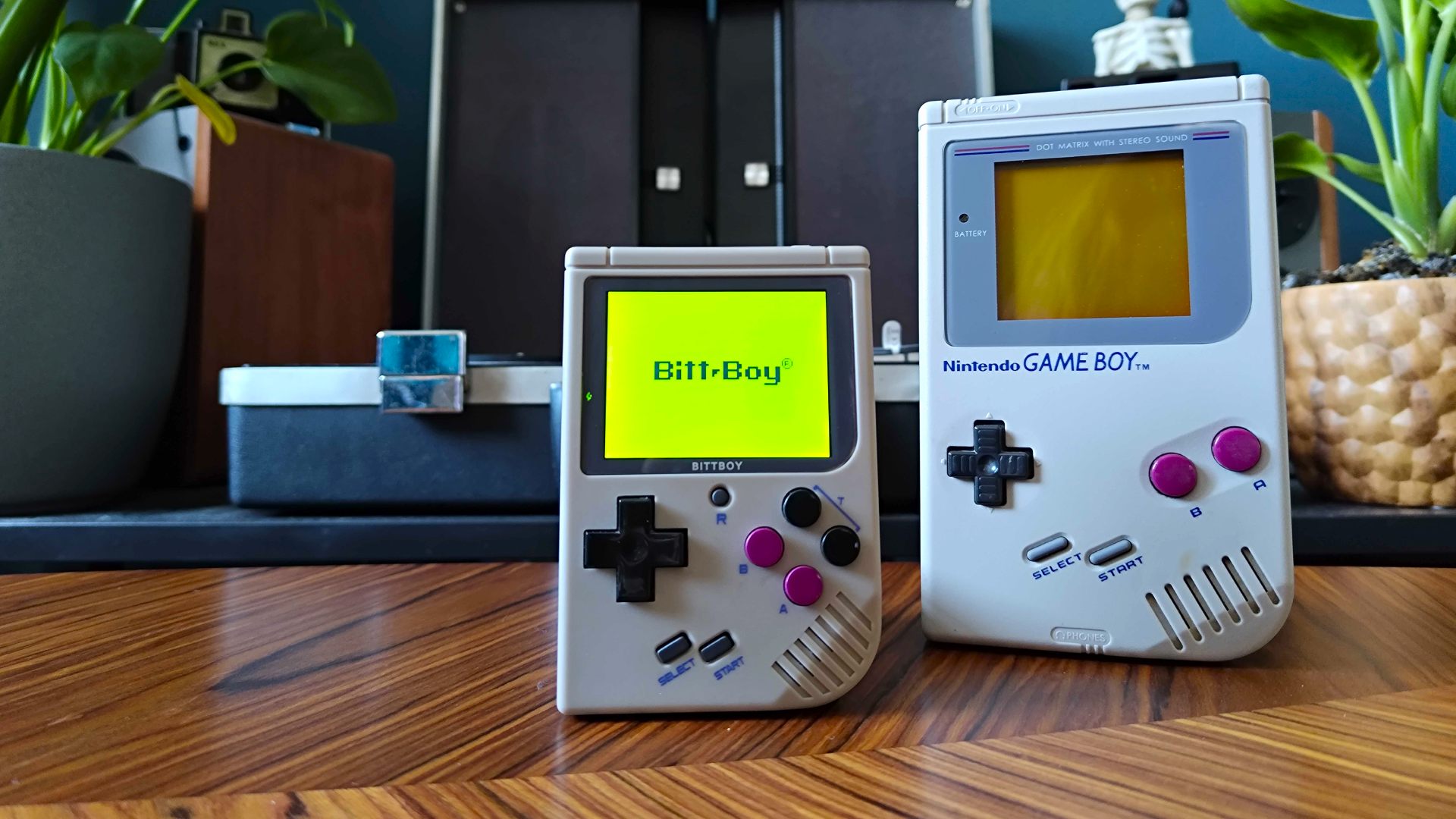
The very first thing that popped into my mind while gazing at my refound friend was “hold up, this thing is tiny!” Like a dork, I quickly found myself sizing the Bittboy up against other bits of tech, eventually discovering that it’s the same size as my old iPod classic, and it puts the Super Pocket to shame size-wise. If that’s not truly pocket sized then I’m three goblins in a trench coat pretending to be a hardware editor, which might actually be true but it doesn’t change the device’s dinky dimensions.
Of course, there’s a good reason why the Bittboy is itty bitty, and it’s mainly because there’s not much going on inside. I mean, there are enough innards to ultimately pull off its goal of running old Gameboy games, but it’s painfully obvious that most of its weight actually belongs to the lithium battery stowed away round the back. It doesn't quite feel like it’s going to float out of your hands in the same way that the infamous McNugget Tetris handheld does, but then again, this didn’t come out of a kid's Happy Meal.
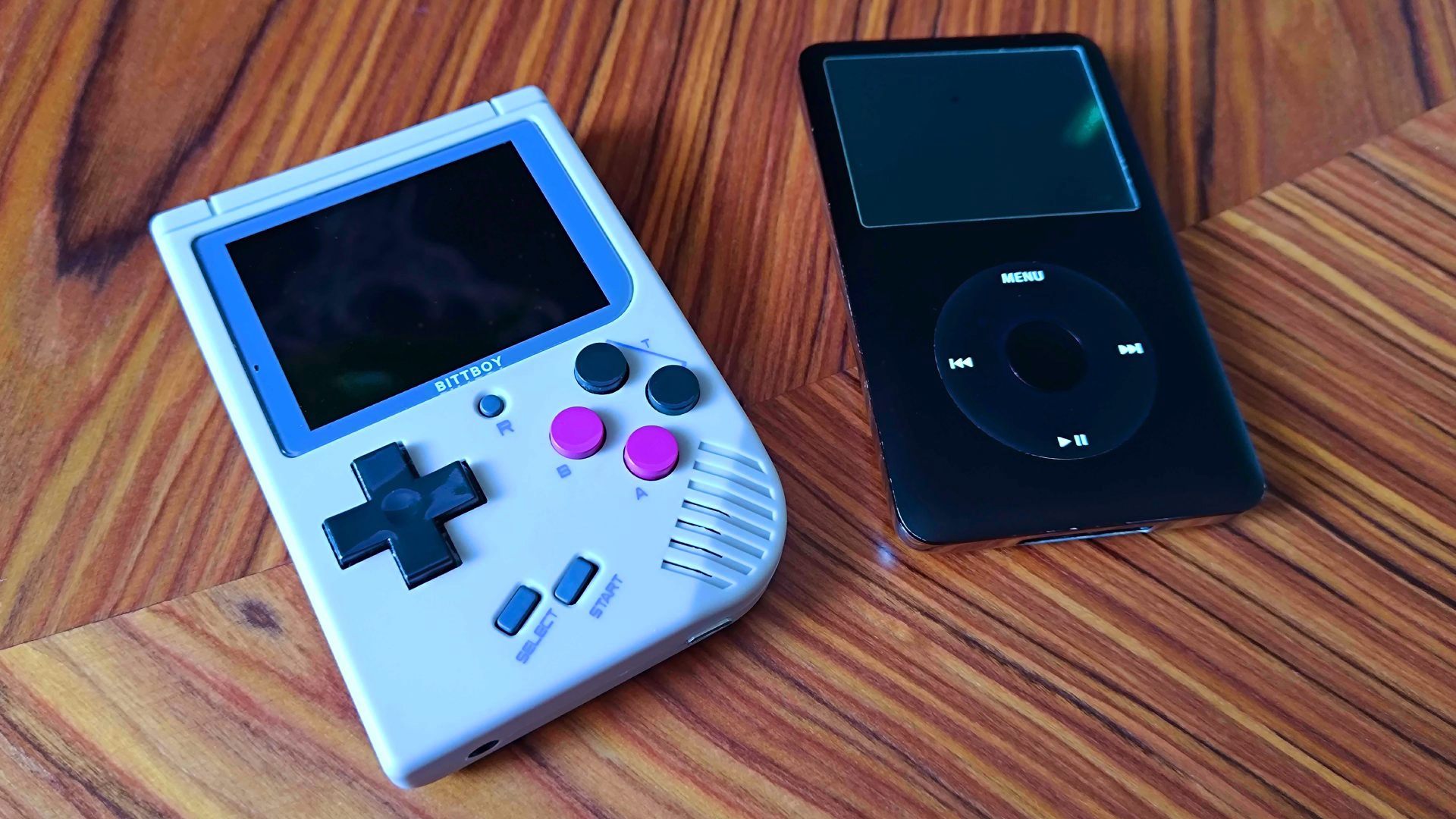
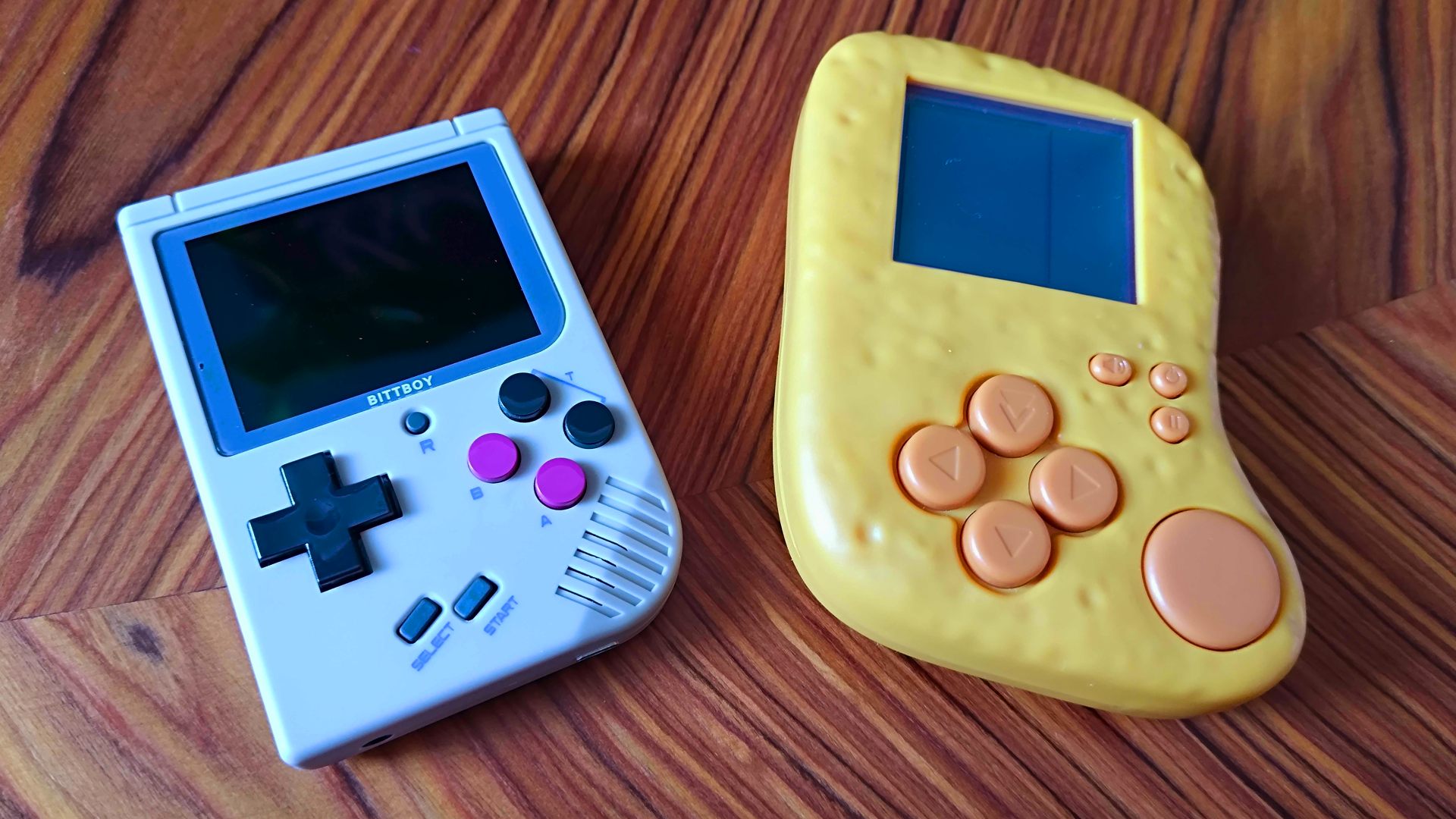
To call the Bittboy an uncanny Gameboy might sound like a negative, but the homage actually comes together aesthetically. Touches like ensuring the buttons are maroon, including a glass screen lens with a similar bezel, and keeping details like the speaker grille and options buttons in the same place help hammer home its inspiration. I do think it’s a good thing that newer devices now focus more on ergonomics over whether engraving on the shell looks like a Nintendo classic console, even if I can completely vibe with tiny versions of old systems.
Speaking of ergonomics, the Bittboy doesn’t know the meaning of the word. Playing it isn’t going to cause your hands to instantly cramp, but holding the tiny console does make me feel a bit like Godzilla getting some game time in before giving Ghidorah the beat down. Its buttons and d-pad feel far more serviceable than I thought they would now that I’ve tried superior options, ignoring the fact the cheap plastic sometimes squeaks during use.
Classic compact capers with caveats
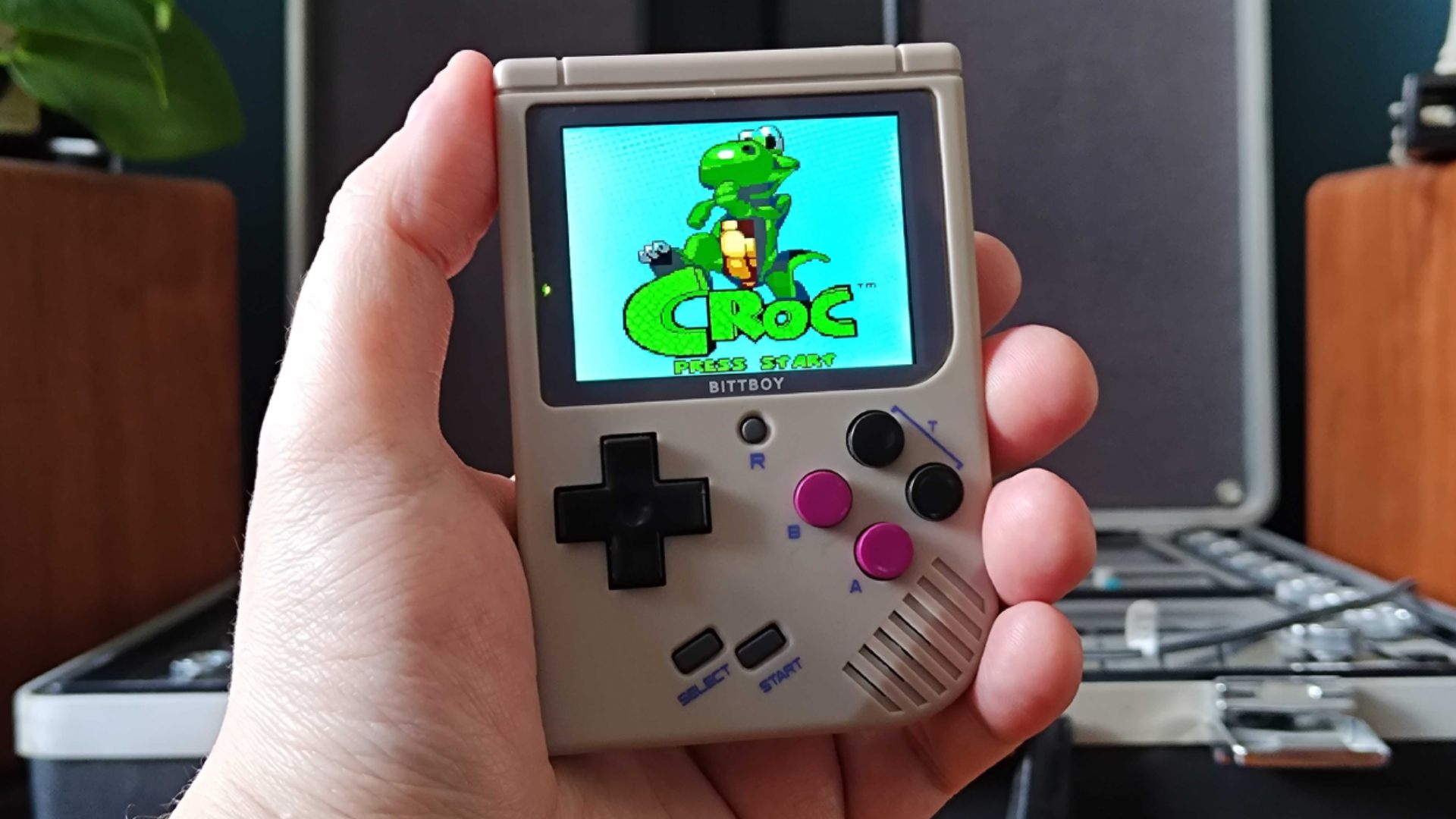
I honestly can’t remember where I picked up my Bittboy, but I do know it came with a microSD card and an operating system pre-loaded. As a default, it’s seemingly set up to run NES, Game Boy, and Game Boy Color games, which offers a hint as to what it can handle running. Before tampering with anything, I decided to take the portable pal for a spin to remind myself what the experience was like back in 2019.
For the most part, I’m happy to report that Bittboy doesn’t feel ancient, at least when it comes to running 8-bit romps. Its operating system in its current state is incredibly basic, and you’ll have to scroll down text lists to find your desired ROM, but every game I tried fired up just fine and delivered nice, crisp pixels on its 3.5-inch screen. The sound wasn’t terrible either, managing to screech impressively loud, so much so that I had to Google what the volume controls are (it’s select + the right-hand grey buttons labeled ‘T’).
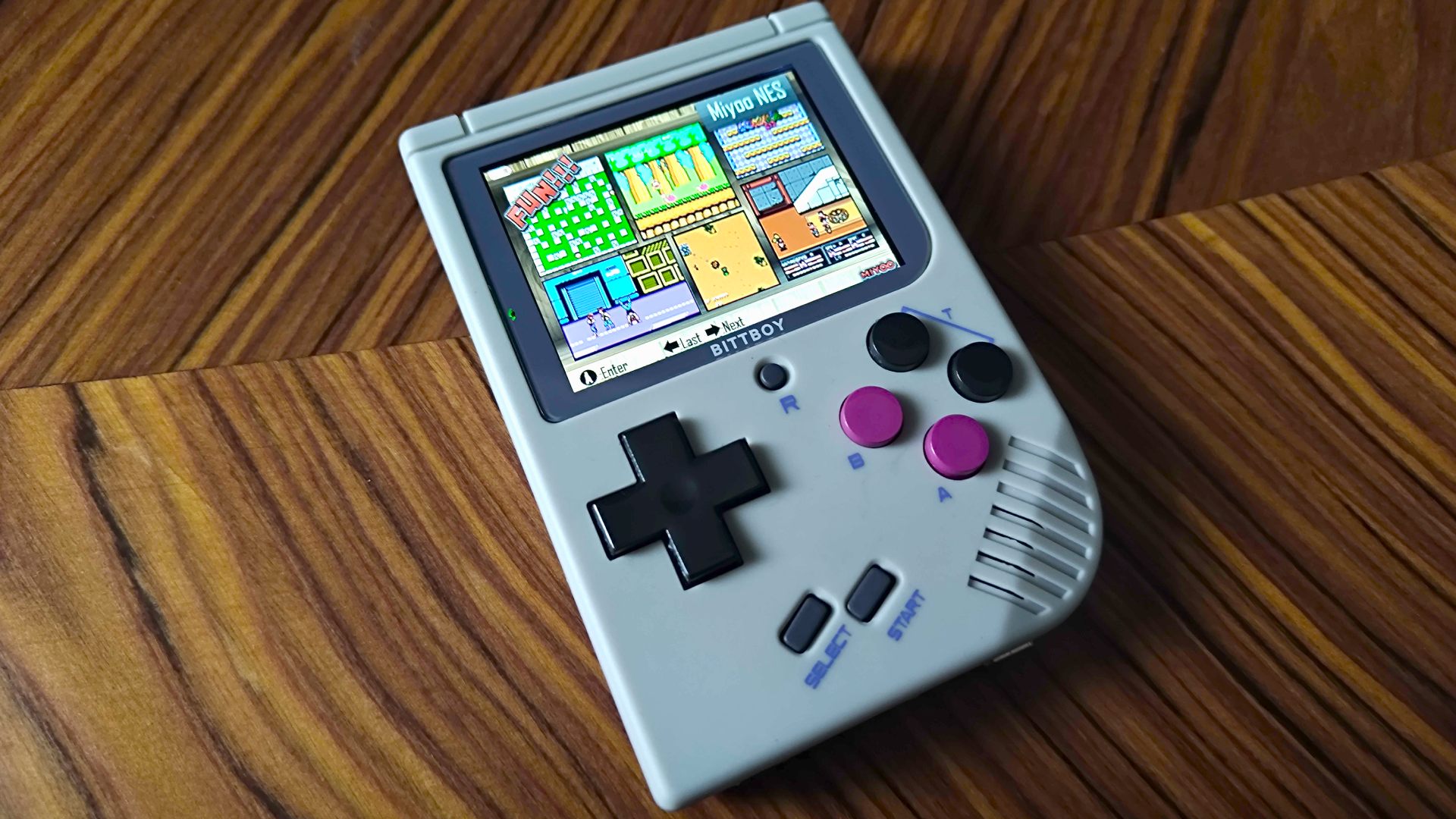
Having had my fill of trying Croc 2 on the GBC, throwing balls at pocked-sized monsters, and getting infuriated at Mega Man, I granted myself permission to tinker. By that, I mean I set out to see whether there was a new OS that could provide greater emulation capabilities. To my amazement (and amusement), there’s still a website live with firmware updates that looks far older than it actually is thanks to the 2000s dawn of the internet vibes. So, I grabbed the latest patch to give the old gal the best chance at impressing me, keeping in mind it's up against fresh contenders.
I’m not exaggerating when I say using newer custom Bittboy firmware completely revamps things on the software front. From featuring a new Gameboy-inspired rolling text intro to providing a pretty pleasing interface with cover art and icons, the OS provides everything I’d more or less expect from a device today, not to mention it bakes in a whole bunch of other emulators. We’re talking everything from NES, SNES, and PS1 to more niche platforms like the Vectrex and MSX, all packed into something the size of a credit card.
Look, I know, by today’s standards that’s not overly impressive, and my brief stint trying Tomb Raider made me feel a little sick thanks to choppy frame rates. Still, it’s easy to see how this device could have kickstarted the retro revolution happening in the handheld scene today, as its ambitions are all more or less a reality that can now be exceeded for under $100.
An ode to the Bittboy
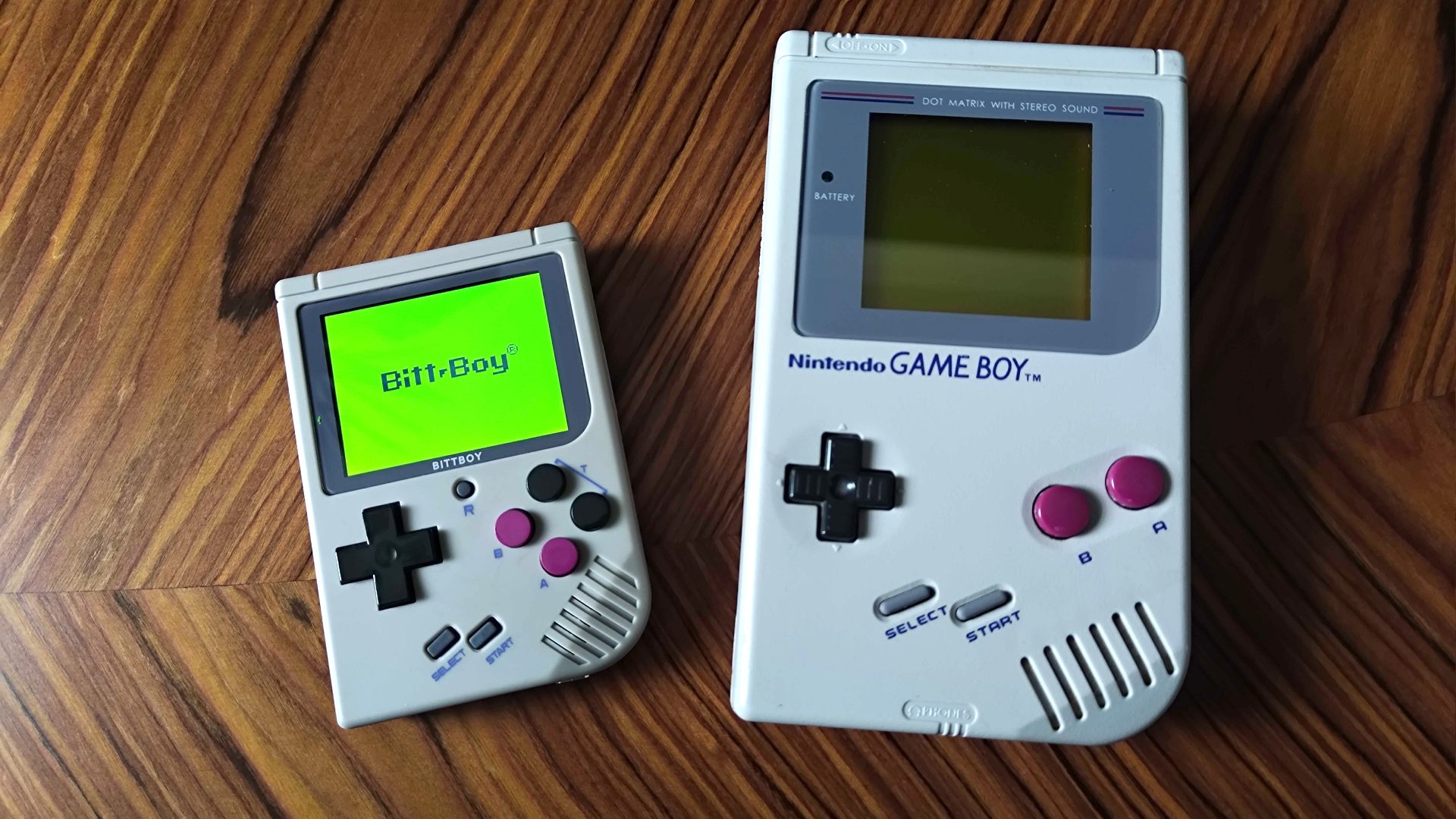
By revisiting the Bittboy, I’ve gained an even greater appreciation for the selection of retro handhelds out there today. It’s clear to see why everyone was hyped about the original back in 2019, as before dedicated devices of decent quality became a thing, my go-to for emulation was a modded PSP 2000.
Considering you can now grab options by Anbernic and Miyoo for next to $60 that can outpace the PSP’s capabilities, I think it’s safe to say the emulation scene has evolved. I mean, we’re even seeing premium portables like the Ayn Odin 2 take to the stage with impressive Android tricks and enough horsepower to mimic most consoles out there.
Ultimately, while it wasn’t the first device of its kind, I’d argue that the Bittboy is responsible for laying the groundwork for the market we have today, igniting an interest in a specific category of handheld that has since shifted with the times. Maybe in another five years, I’ll get to have a look at the top Gameboy-shaped handhelds available now and compare them to what’s on offer in 2029, and if the pace the industry is moving at now is anything to go by, we’re in for something spectacular.
Looking for something that can run the latest games? Check out the best gaming PC and best gaming laptop options for high spec rigs. Alternatively, swing by the best Steam Deck dock if you're looking to turn Valve's portable powerhouse into a hybrid.







